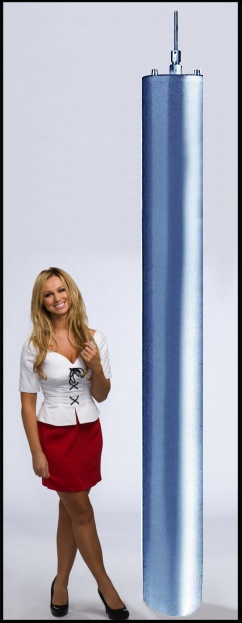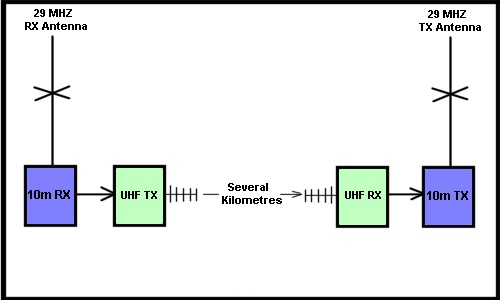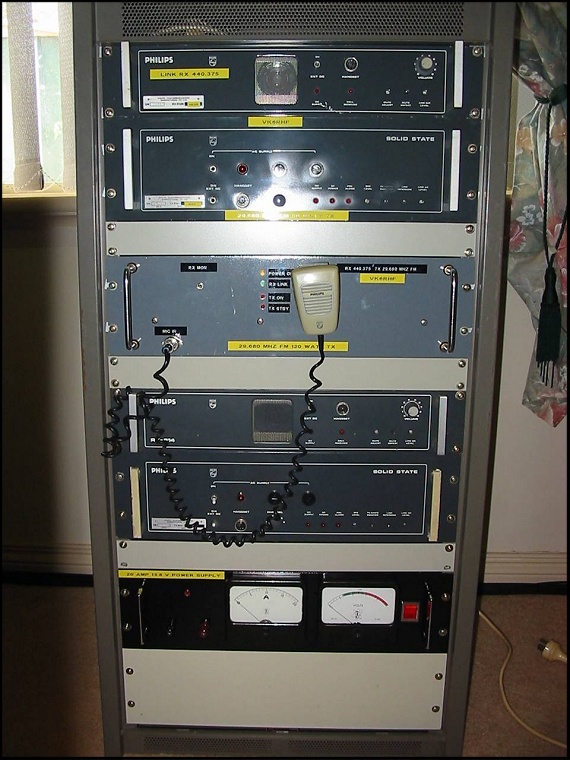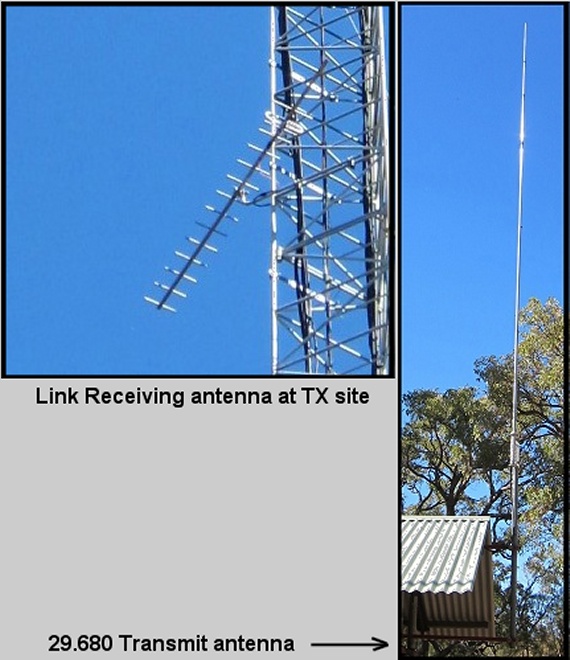Home
| WARG applied for a 10 metre repeater
licence way back in the early 1990s, but it was not until Tony VK6YAG
built the complete repeater system, did VK6RHF come on air on May 24th
2002. 10 metres an amazing band
During
the early 1990s I became
interested in the 10 metre band, and in particular 10 metres FM. Sun
spot activity was high and 10 metres did provide contacts during the
day and early evening to much of the World. 10 metre repeaters in
particular, provided easy checks of propagation and contacts with other
amateurs around the World. Noise free FM contacts were the norm almost
at any time of the day.
VK3RHF
The Melbourne repeater VK3RHF in particular could be received in Perth from about 8am Perth time through to sunset. The signal strengths were noise free for much of the day. FM does suffer from phase distortion due to multipath or selective propagation on a given FM frequency where not all of the FM bandwidth is propagated with equal signal strength (my explanation). This distortion can be severe and degrade FM transmission to the point of zero readability. VK3RHF has developed to a large area system on.... 10 metres 6 metres 70 centimetres 23 centimetres With a total of 16 receivers and 10 transmitters. The 10 metre system has two diversity receivers. North American FM repeaters also were common during the early morning while there was daylight between VK6 and the Western USA. With the last Sun spot high being poor we look forward to the next predicted Sun spot activity being higher than normal and many 10 metre FM contacts. 100 KHz RX - TX separation
The frequency separation used on 10 metres
for repeaters is 100 KHz, a very narrow frequency difference that cause
issues with desensing, if the entire repeater is located at the same
site. The 100 KHz frequency separation is only 0.3%, not a lot to keep
the transmitter from interfering with the receiver.
On 2 metres the 600 KHz RX - TX separation is only 0.4%, so you might wonder what is the problem, 0.3% is only 0.1% difference. The issue on 10 metres is vertical aerial separation, in terms of dBs, is much less when compared to 2 metres. On 2 metres a 40' vertical aerial separation gives 60dB isolation between antennas, but at 10 metres 40' vertical aerial separation gives 25dB isolation, way short of the 50 to 60dB of isolation required on 10 metres. Cavity filters, although possible on 10 metres, are big, some 3 plus metres high, and at a guess would only give about 10dB isolation in band pass and perhaps 25dB in notch mode.  10 metre cavity filters are big....! The 25dB aerial separation, with say another 25dB from a notch cavity filter, would still be borderline. Hence 10 metre repeaters are usually located at two sites, several kilometres apart. The receiver at one site and the transmitter located at another site. The receiver is linked to the transmitter via a link such as a UHF radio link.  Simple block diagram of split site 10 metre repeater VK6RHF VK6RHF
is located at two sites, the receiver at Bedfordale Hill, 30 kilometres
SSE
of Perth city and the transmitter at a similar height close to the
Roleystone repeater site. As both sites are elevated above the coastal
plain good coverage is to be expected in the Perth Suburban area.
However the first thing you notice about 10 metres is the noise level. Where a given signal strength on VHF or UHF, of a few microvolts is usually noise free, this is not the situation on 10 metres. The receiver is on 29.580 MHz and requires a 179.9 CTCSS tone to access the repeater. The transmitter is on 29.680 MHz and runs at 100 watts VK6RHF 29.580 receiver and UHF link transmitter  VK6RHF Transmitter Rack and UHF link receiver  |